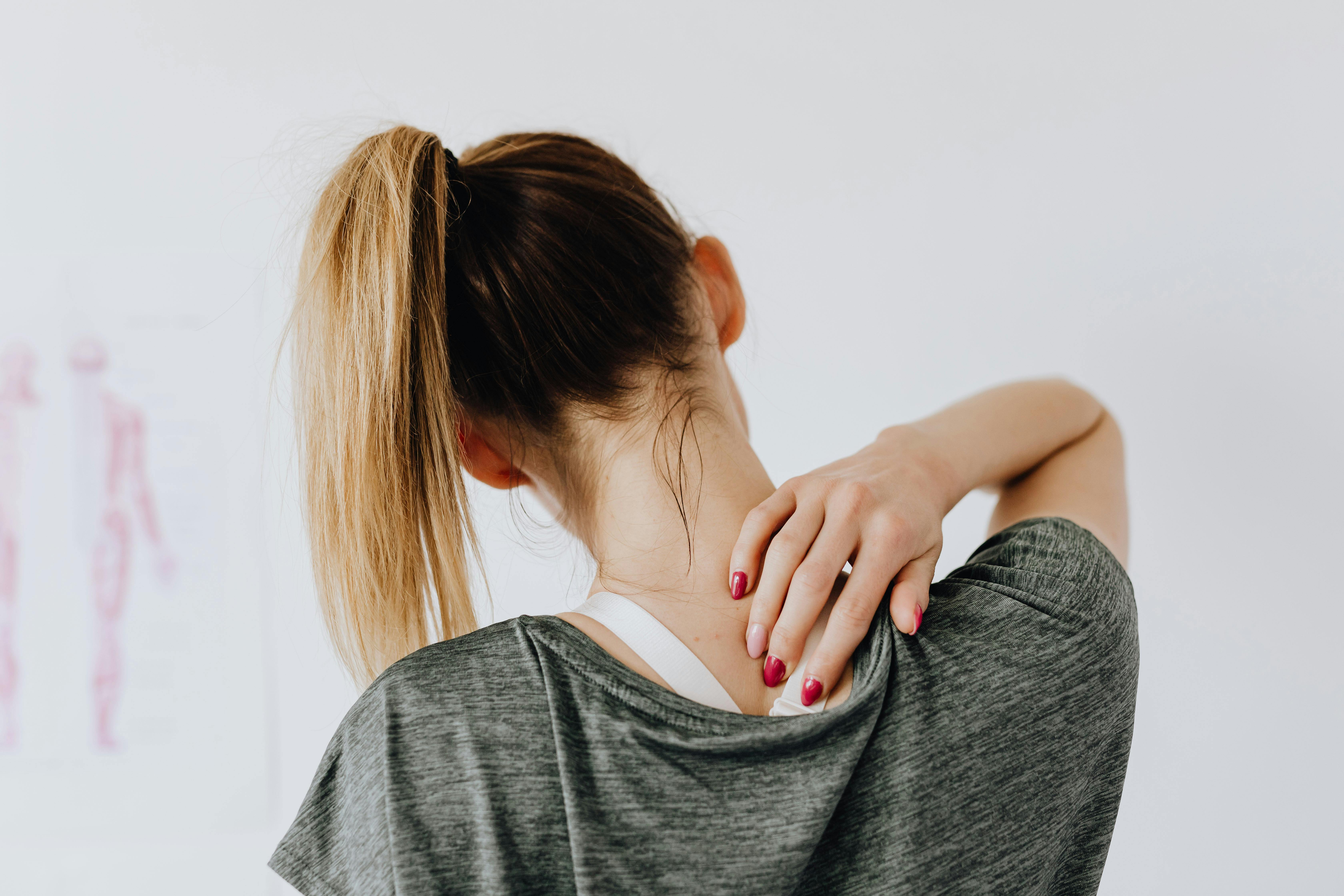Understanding Why Youngsters Are Suffering From Back & Neck Pain: Causes and Solutions

Photo by Karolina Kaboompics from Pexels: https://www.pexels.com/photo/woman-touching-her-back-4506105/
In recent years, an alarming trend has emerged among young adults and adolescents - an increasing prevalence of back and neck pain. Once considered afflictions of older age, these issues are now significantly impacting the younger generation. In this blog, we delve into the reasons behind this concerning trend, explore contributing factors, and propose effective strategies to mitigate and prevent back and neck pain among youngsters.
Contributing Factors to Back & Neck Pain in Youngsters
1. Sedentary Lifestyle
One of the primary culprits behind the rise in back and neck pain among youngsters is the prevalence of sedentary lifestyles. Many young adults and adolescents spend prolonged hours sitting, whether in front of computers, gaming consoles, or smartphones. This lack of physical activity and prolonged static posture can lead to muscle imbalances, weakened core muscles, and increased strain on the spine.
2. Poor Posture
The adoption of poor posture habits exacerbates the risk of back and neck pain. Slouching while sitting, hunching over electronic devices, and carrying heavy backpacks improperly can strain the muscles and ligaments supporting the spine. Over time, these repetitive strains contribute to discomfort and pain in the neck, upper back, and shoulders.
3. Increased Screen Time
The digital age has brought about a significant increase in screen time among youngsters. Excessive use of smartphones, tablets, and computers often leads to prolonged periods of looking down, known as "text neck." This position places undue stress on the cervical spine and can lead to structural changes over time, contributing to neck pain and stiffness.
4. Lack of Physical Activity and Exercise
Inadequate physical activity and exercise further compound the issue. Regular exercise helps strengthen muscles, improve flexibility, and maintain proper spinal alignment. Without sufficient physical activity, muscles become weak and less able to support the spine effectively, predisposing youngsters to musculoskeletal pain.
5. Psychosocial Factors
Psychosocial factors such as stress, anxiety, and poor mental health can manifest physically as musculoskeletal pain. Youngsters facing academic pressure, social challenges, or mental health issues may experience tension and tightness in the muscles of the back and neck, contributing to pain and discomfort.
Why Our Lumbar Needs Strong Core Muscles: Understanding Back Anatomy
The lumbar spine, or lower back, plays a crucial role in supporting the body's weight and facilitating movement. It consists of five vertebrae (L1-L5) that are larger and more robust compared to those in the thoracic (mid-back) and cervical (neck) regions. The lumbar spine is naturally curved inwards (lordotic curve), which helps absorb shock and maintain balance while standing, walking, and running.
Importance of Core Muscles
The core muscles, which include the abdominals, obliques, and muscles along the spine, provide stability and support to the lumbar spine. These muscles help maintain proper posture, distribute forces evenly across the spine, and protect against injuries. Strong core muscles are essential for:
- Spinal Stability: They help stabilize the spine during movements and activities, reducing the risk of excessive strain and injury.
- Postural Support: Core muscles support good posture by preventing slouching or excessive curvature of the spine, which can lead to back pain.
- Functional Movement: They facilitate efficient movement patterns and transfer of forces between the upper and lower body during activities like lifting, twisting, and bending.
Strategies to Prevent and Manage Back & Neck Pain
1. Promote Good Posture
Encourage youngsters to maintain good posture habits. Sit upright with shoulders relaxed, ears aligned with shoulders, and feet flat on the floor. Use ergonomic furniture and adjust computer and desk heights to support proper posture.
2. Limit Screen Time
Encourage breaks from electronic devices and promote activities that require physical movement. Implement guidelines for screen time to reduce prolonged periods of sedentary behavior.
3. Incorporate Physical Activity
Encourage regular physical activity and exercise. Activities such as strength training, swimming, yoga, and Pilates can help strengthen core muscles, improve flexibility, and support spinal health. A good idea is to hire a personal trainer if you're a beginner or can't design your workout on your own.
4. Educate on Backpack Safety
Teach proper backpack usage to distribute weight evenly across the shoulders and back. Use backpacks with padded shoulder straps and adjust straps to fit snugly against the back to minimize strain.
5. Stress Management and Mental Health Support
Address psychosocial factors contributing to pain through stress management techniques, mindfulness practices, and seeking mental health support when needed. Encourage open communication about stressors and provide resources for coping strategies.
Conclusion
Back and neck pain among youngsters are multifaceted issues influenced by lifestyle habits, posture, physical activity levels, and psychosocial factors. By promoting awareness, educating on proper habits, and encouraging a balanced approach to physical and mental well-being, we can mitigate the prevalence of these issues. Empowering youngsters with knowledge and resources to prioritize spinal health will support their overall health and quality of life both now and in the future.
References
- Hoy, D., et al. (2014). The global burden of neck pain: estimates from the Global Burden of Disease 2010 study. Annals of the Rheumatic Diseases, 73(7), 1309-1315.
- Heneweer, H., et al. (2011). The effects of physical activity in prevention and treatment of neck and low back pain: a systematic review. Pain Practice, 11(4), 382-393.
- American Chiropractic Association. (n.d.). Backpack safety.